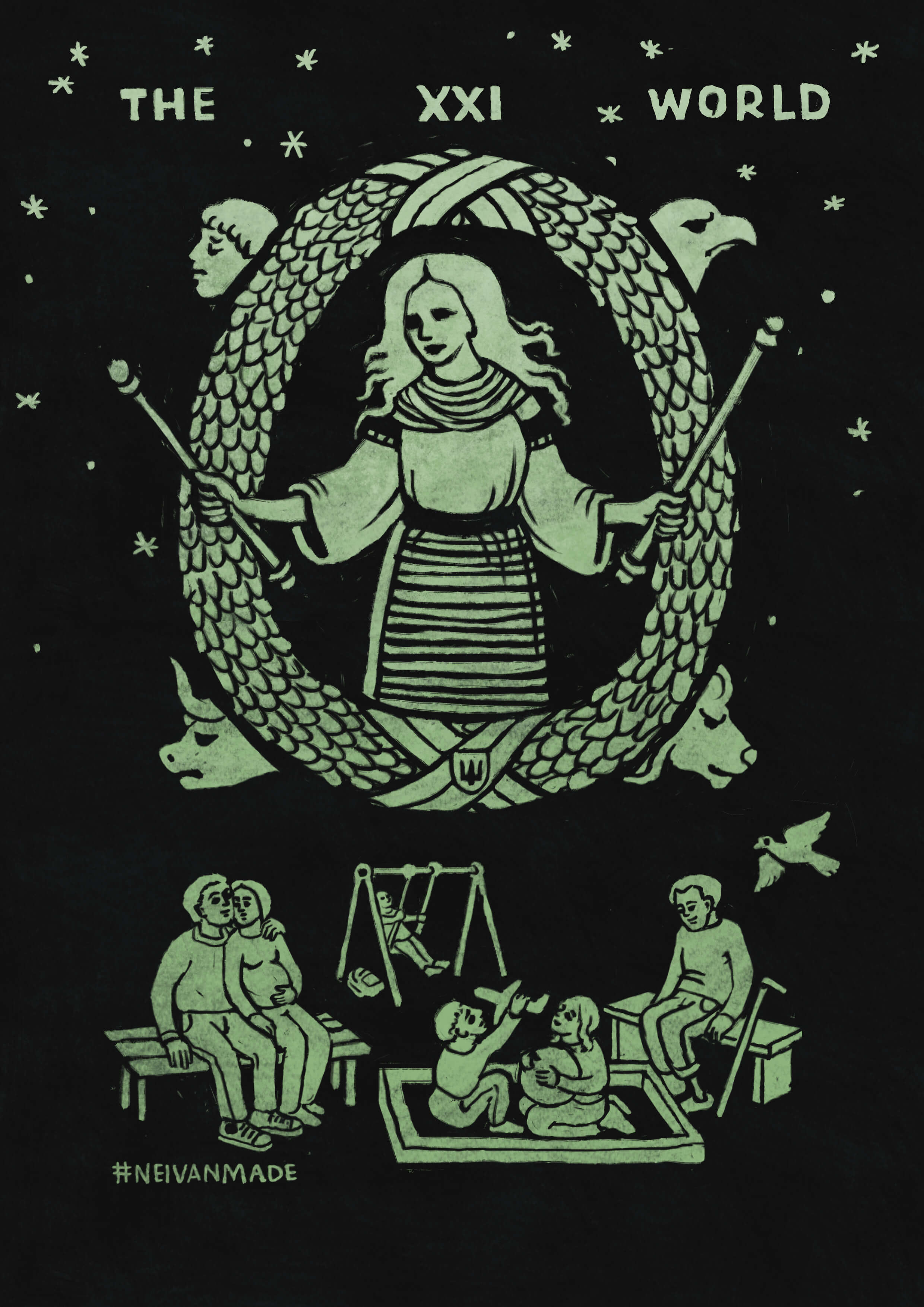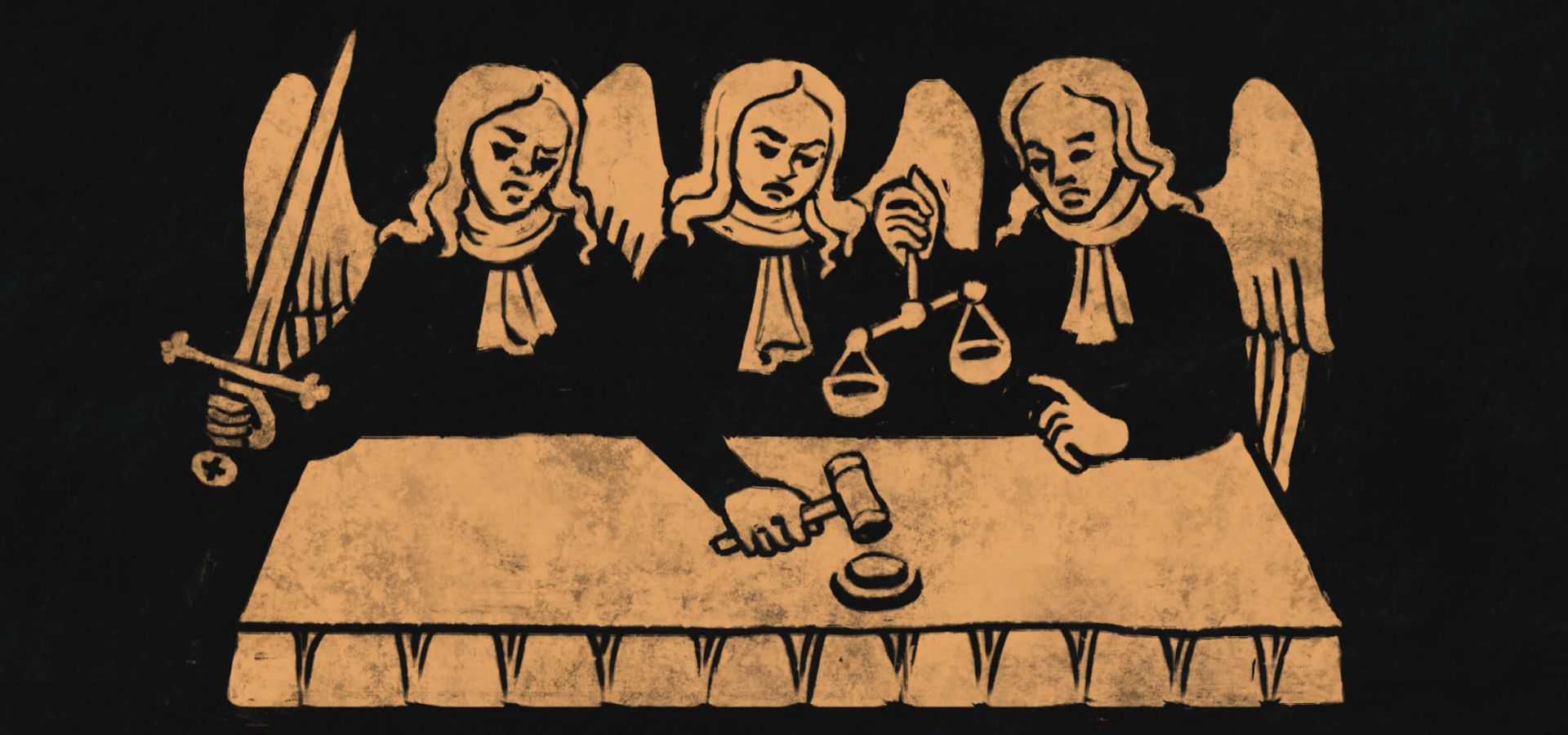
The Images of Preordained: How a Ukrainian Tarot Deck Came to Be

Ukrainian artist, illustrator. Art Director at Hiatus Games and post-graduate student at Lviv National Academy of Arts.
— I dubbed my Ukrainian tarot series Arcana Belli — the Arcana of War. So far, I have completed the 22 cards of the Major Arcana. Tarot is rather a cultural phenomenon to me — I have a sceptical attitude toward divination. Even before the war, my colleagues and I mulled over creating a Major Arcanum in the traditional style, i.e., in the vein of Pamela Smith. If you see a tarot deck, there’s a high chance you’d be looking at her work.
The project was suspended on the 24th of February — the first day of the full-on war paralyzed me. However, on the 25th, I started making my first patriotic banners and illustrations. How can an artist help his country during the war? It’s hard to answer this question. However, I had the experience of assisting the army and realized that the country needed me in this quality. Besides, my works bring in the money I donate to the military.
As a student, I like linocuts — the linoleum engravings — for their closeness to popular art. Since I was terrible at them in my Academy years, I decided to imitate the engraving in Photoshop. And it turned out so realistic that people often ask me if they could buy the original.
I draw not concrete people but characters. I have been painting icons for 10 years, and it taught me to think in symbols, which came in handy in creating this series. On the day before the 8th of March, I made a drawing that combined two characters: a woman who suggested the Russians take sunflower seeds and fertilize the Ukrainian soil; and a Ukrainian service member who lost her leg during the anti-terrorist operation in the east of Ukraine. I saw the latter in a photo a few years ago but couldn’t find it again. In the end, I decided there was no need to: it wasn’t the concrete woman that I was after but the image of warriors in general.
I have been painting icons for 10 years, and it taught me to think in symbols, which came in handy.
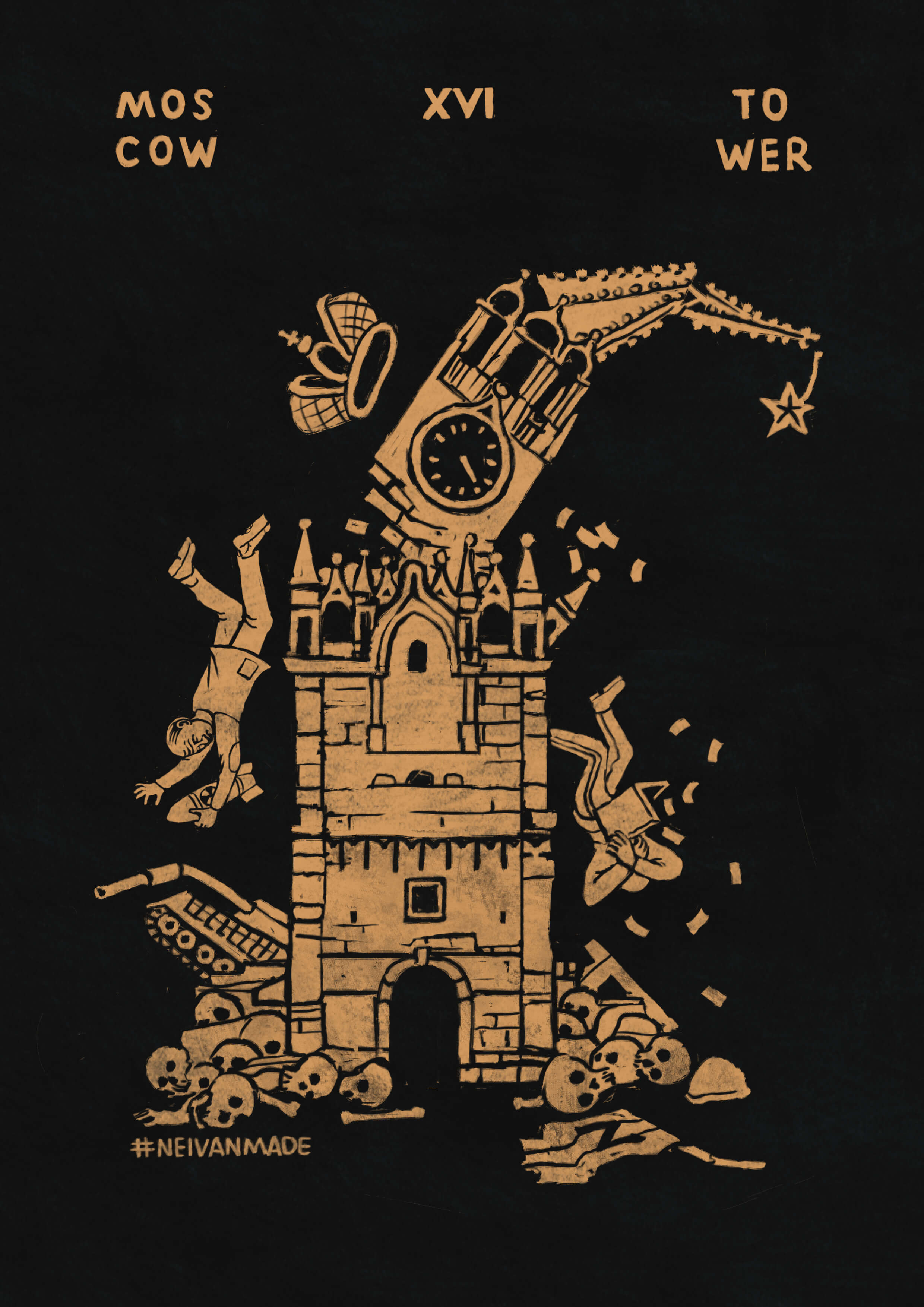
"The Tower"
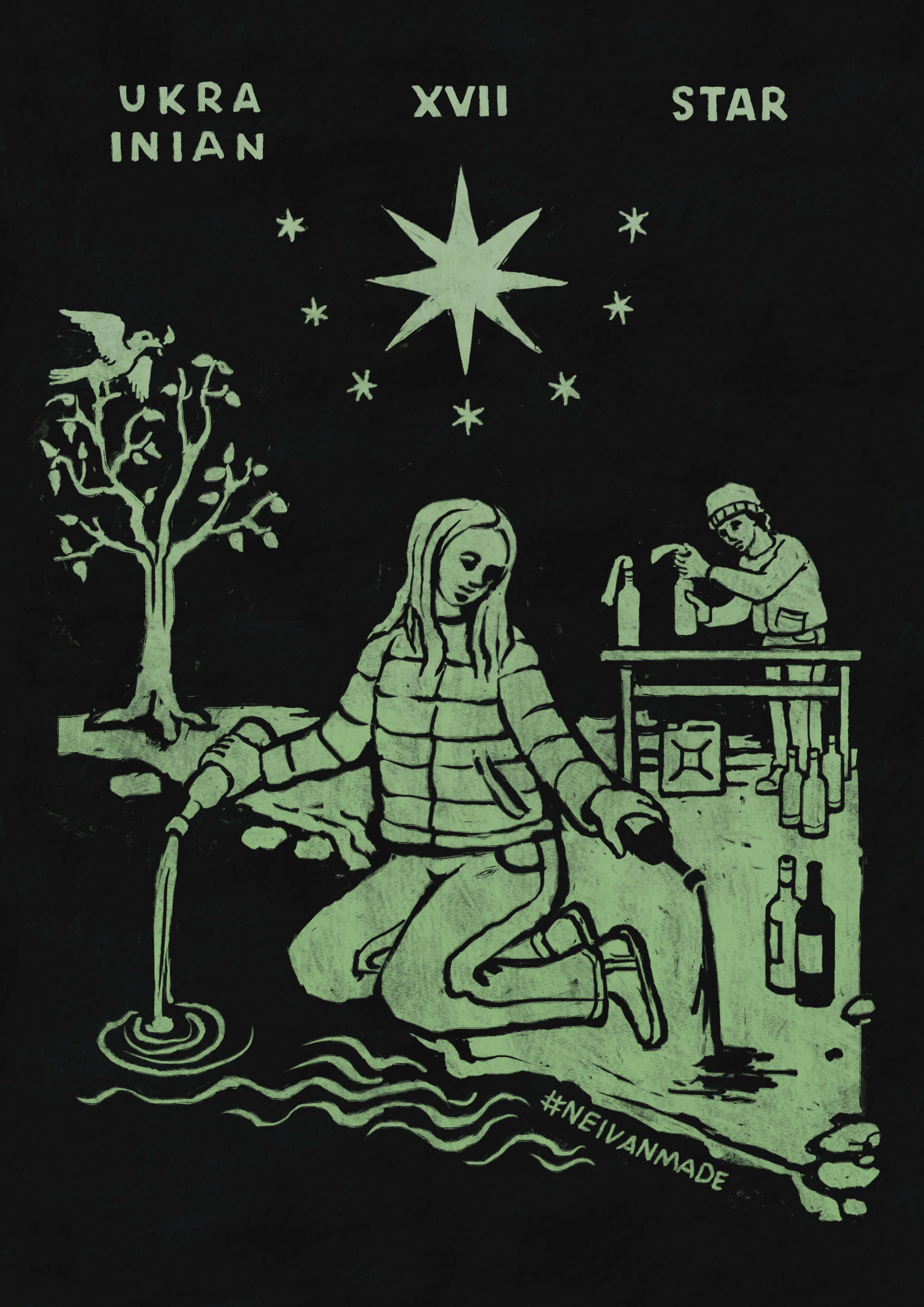
"The Star"
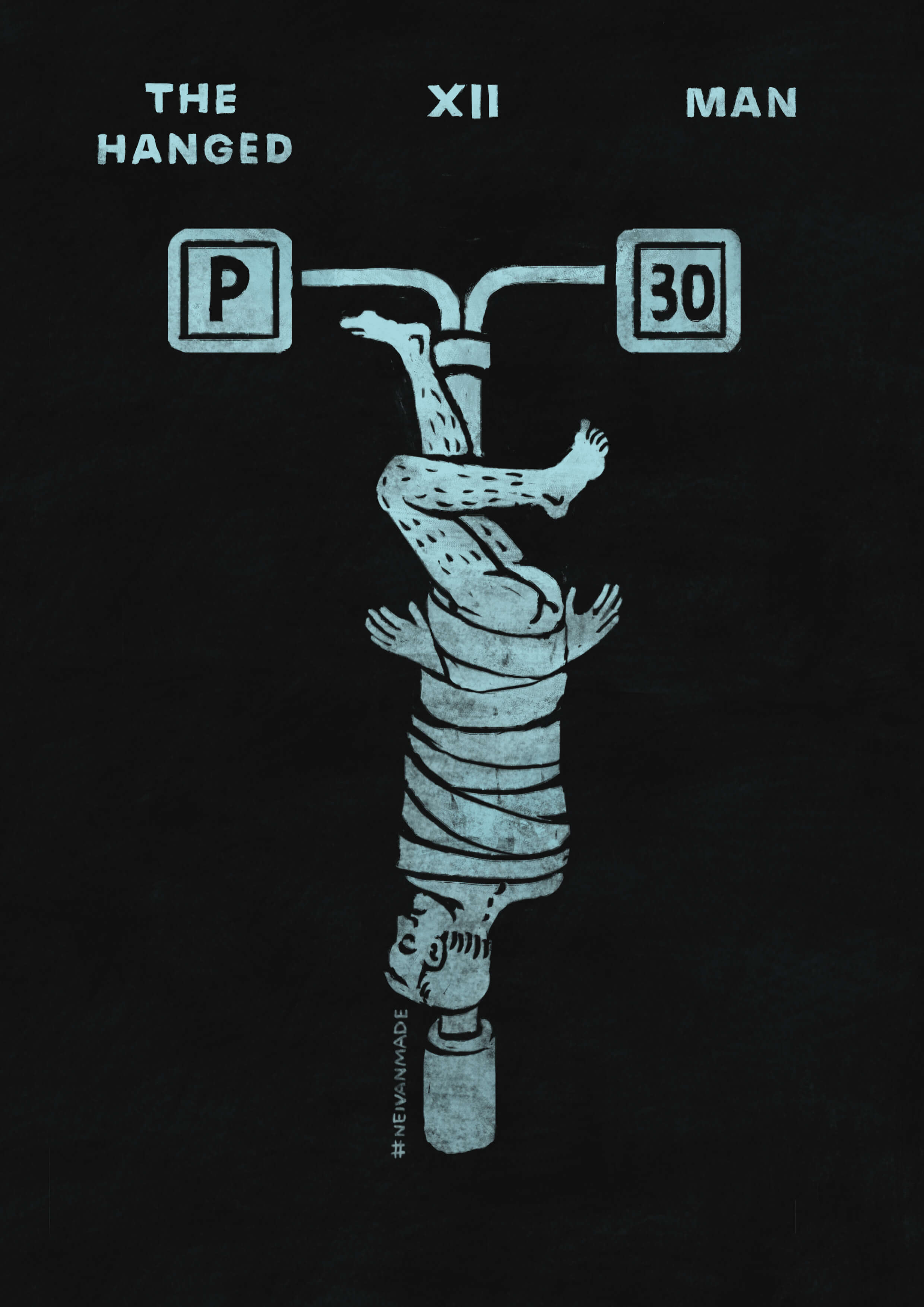
"The Hanged Man"
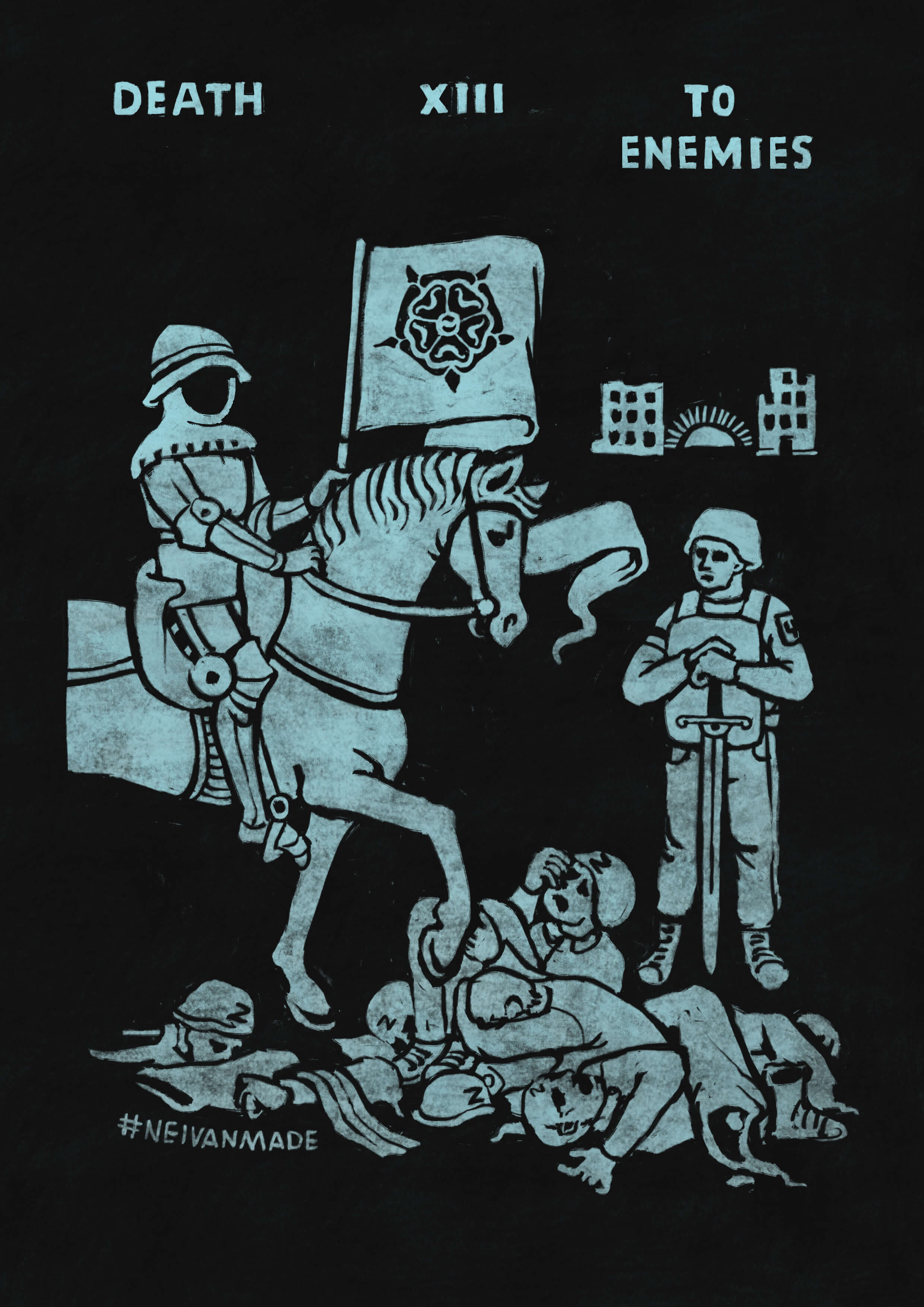
"Death"
However, there are two exceptions to this. The Tower arcane depicts Putin falling from the Spasskaya Tower of the Moscow Kremlin. He is also featured on the Judgement card. I support the idea of the Russians’ collective responsibility, so the Russian president is surrounded by regular folks there. The looter tied to the pole in the Hangman card has the face of Viktor Medvedchuk. The character has been associated with Judas or betrayal from the time immemorial. Likewise, both the petty looter and Medvedchuk have betrayed their people. This image was suggested to me by my friend and co-author Mykhailo Badelin.
The drawing with the captives of Mariupol is my favourite, although not a part of Arcana Belli. The fact that people share it so much shows how well it conveys the feeling of unthinkable horror that our defenders of Mariupol have to endure. It was featured by CNN, Washington Post, Welt, China’s Ming Pao and Ukrainian mass media.
Overall, this war is more of a struggle between the obsolete, dark and the new. Quite literally, it’s the clash of civilizations. In the times of post-truth, Ukraine has shown the entire world that there is truth, there is good and evil.
The history of tarot is connected to the European concept of the world, and my series introduces the Ukrainian reality into the European context. Among my favourites is also the Sun card. It depicts a child riding a horse in the sunflower field with a flag in hand and the enemy skulls at their feet. I based my works on the deck of mystic Arthur Waite and William Rider illustrated by Pamela Smith and changed basically nothing about the style. Waite drew the map of a new, cleansed world. This is what I imagine Ukraine will become after the war ends.
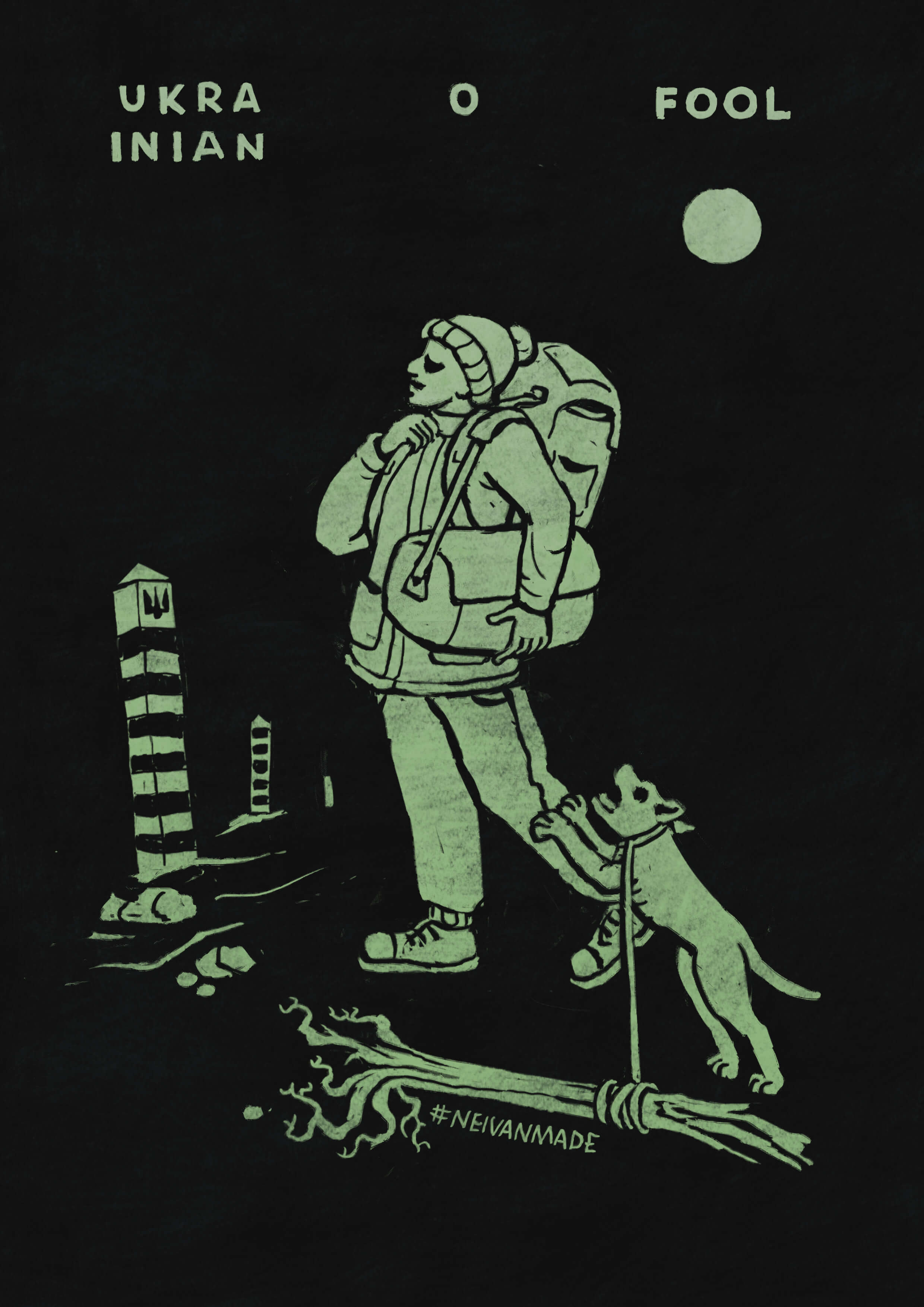
"The Fool"
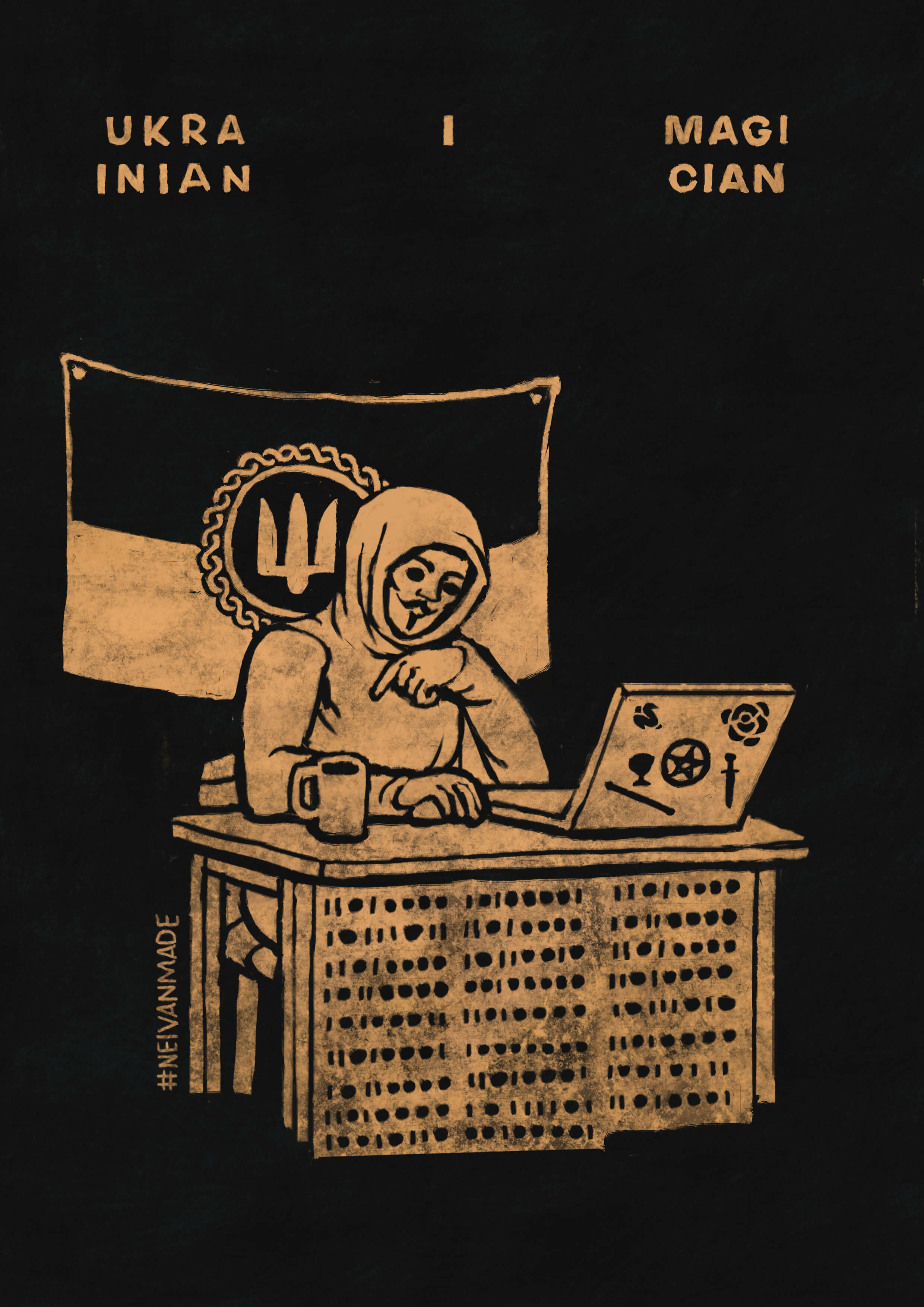
"The Magician"
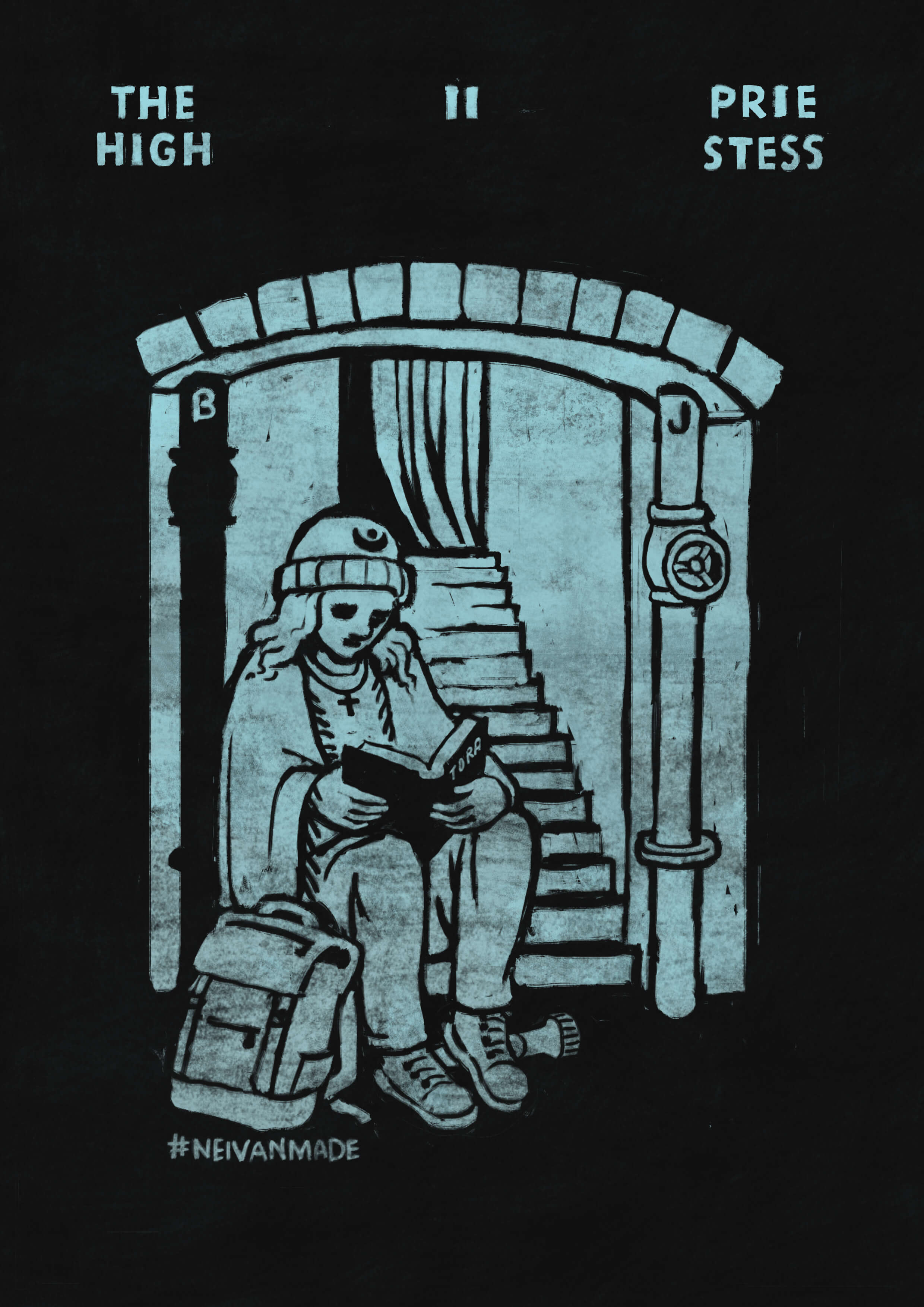
"The High Priestess"
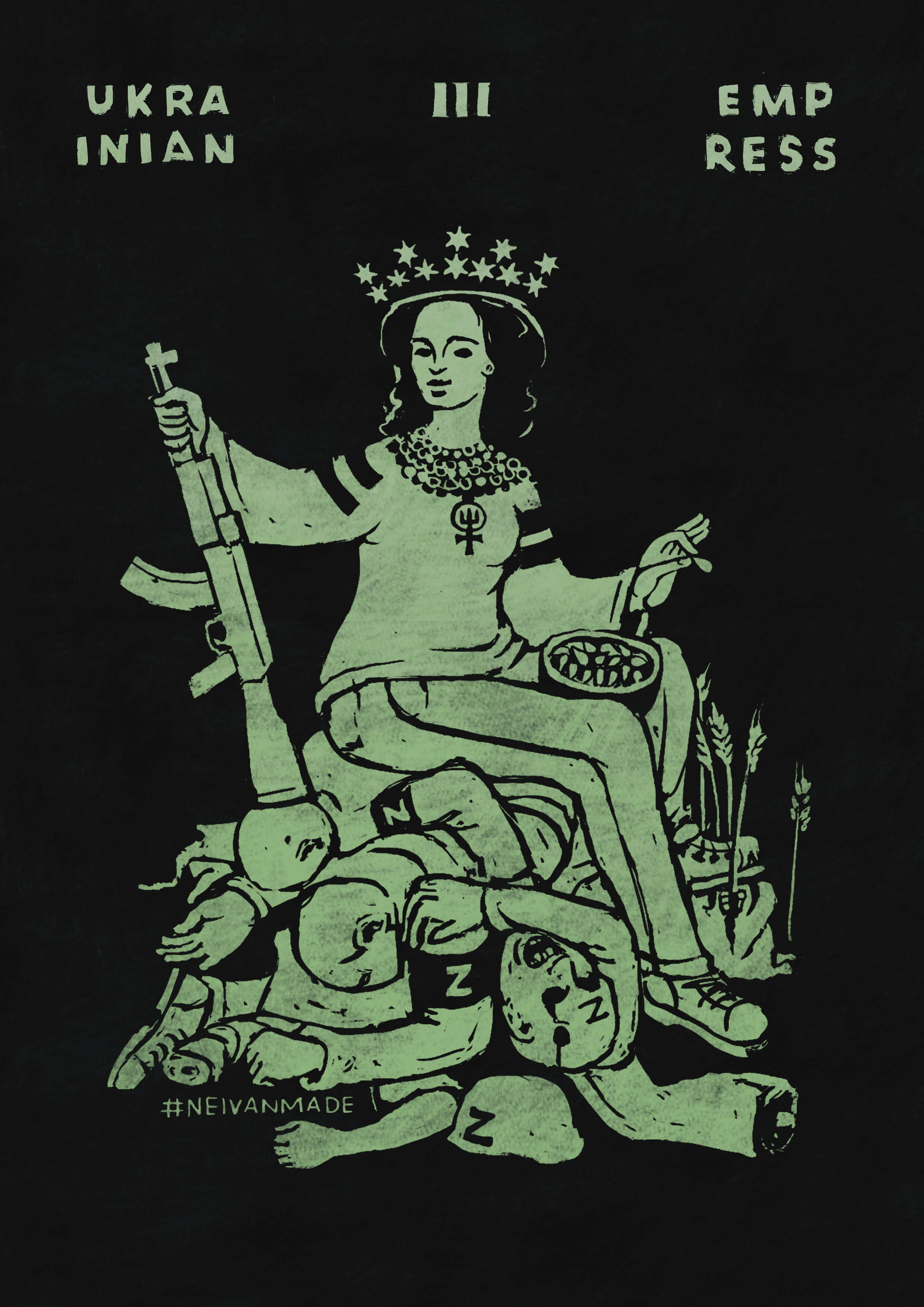
"The Empress"
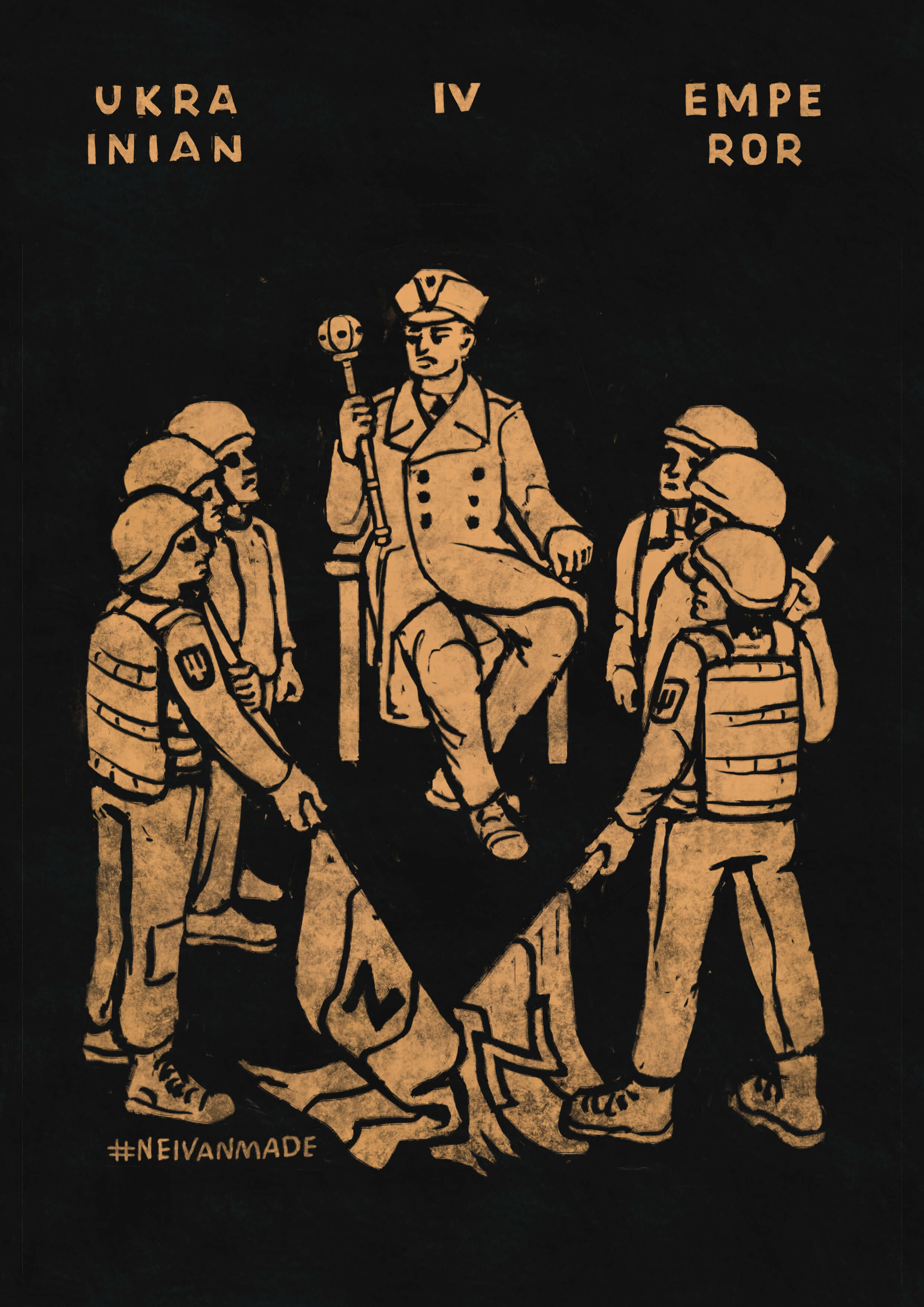
"The Emperor"
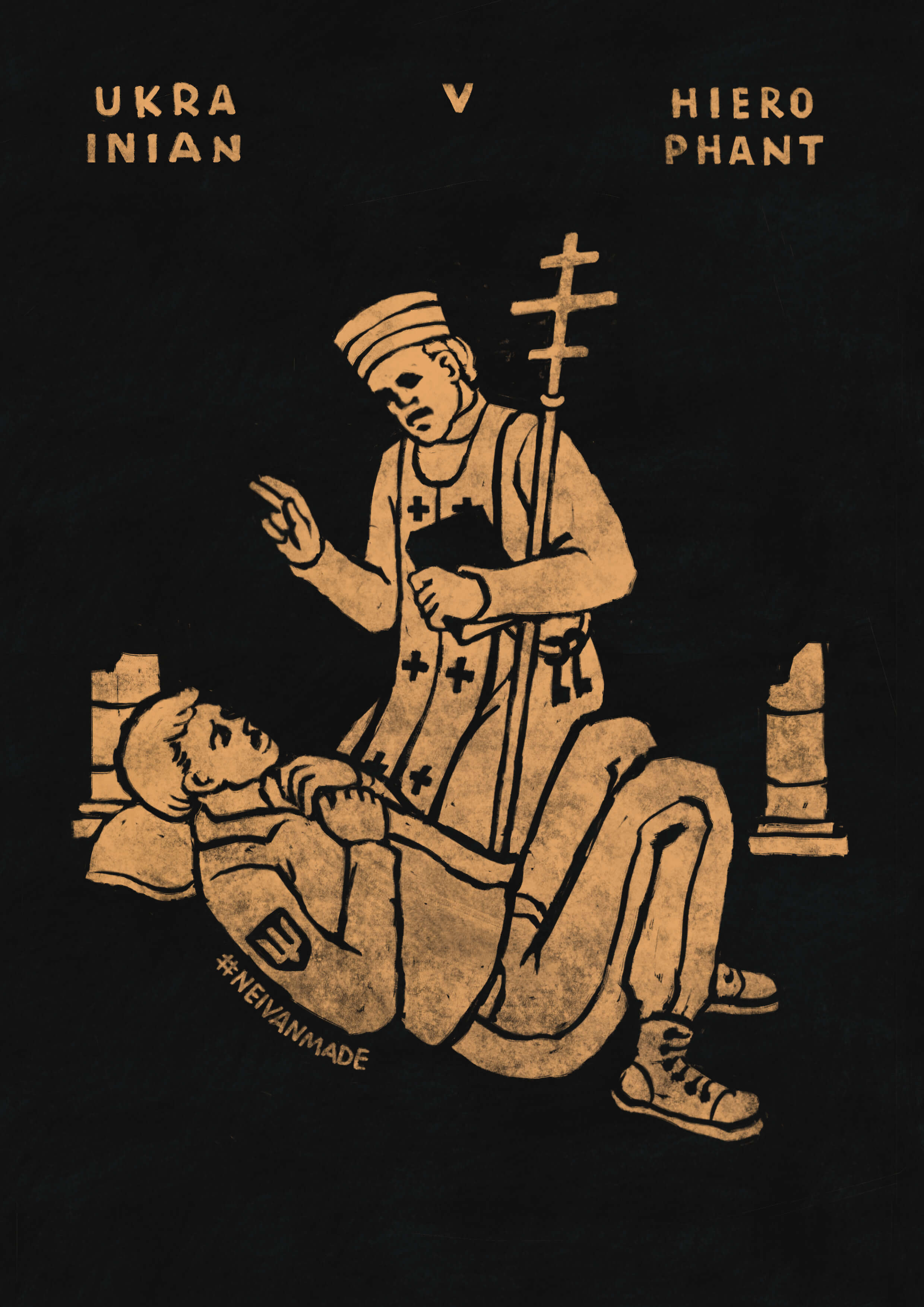
"The Hierophant"
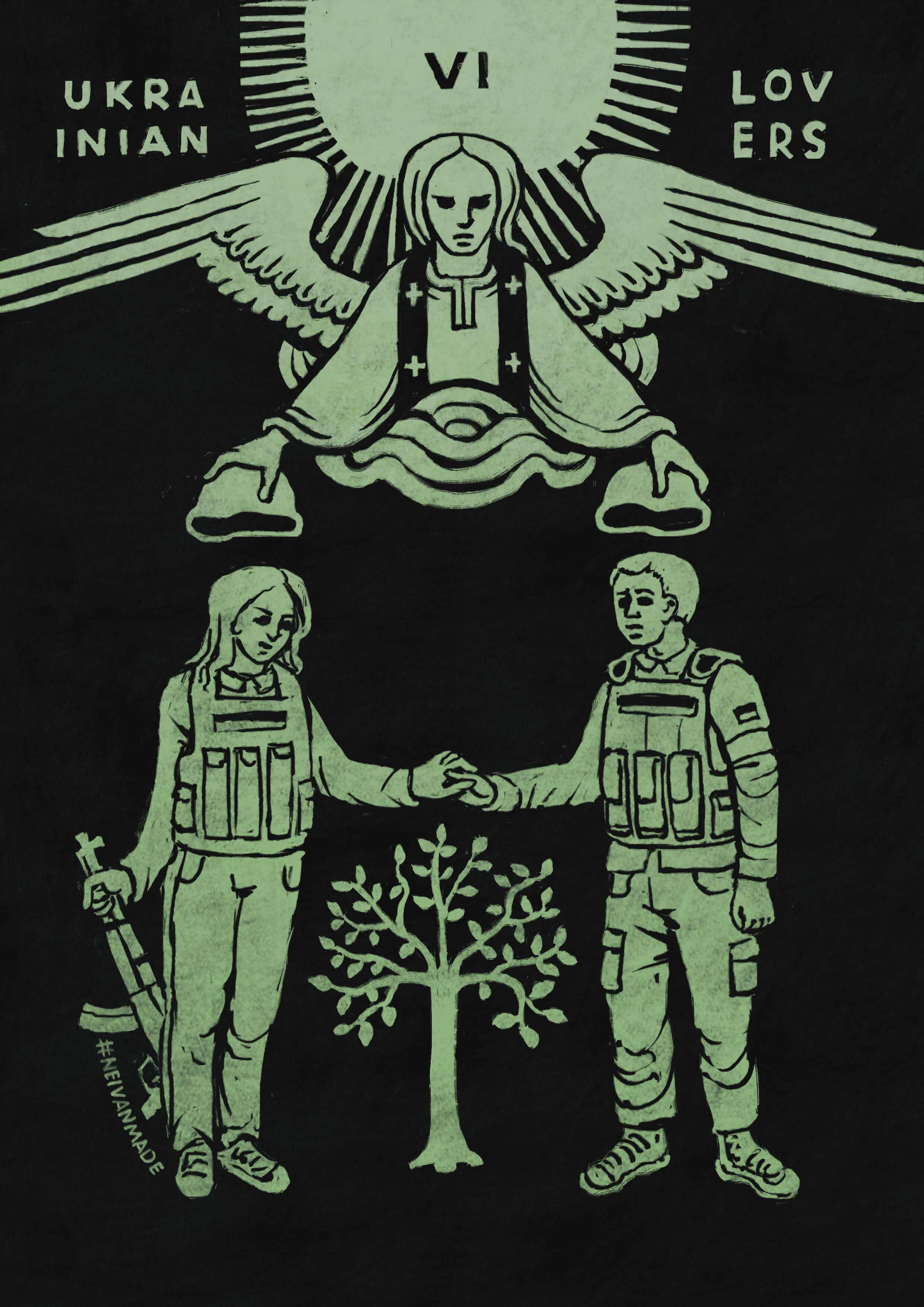
"The Lovers"
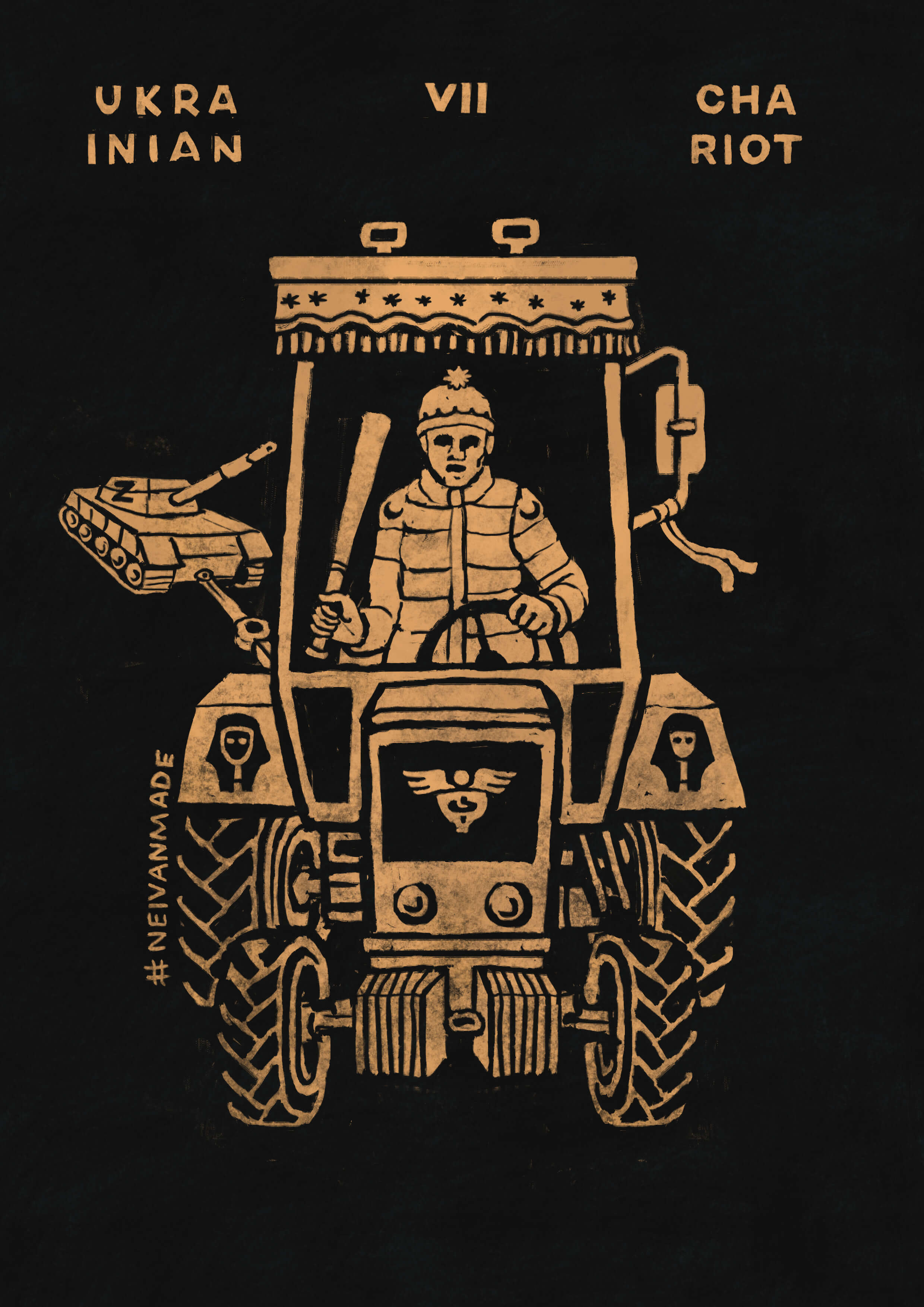
"The Chariot"
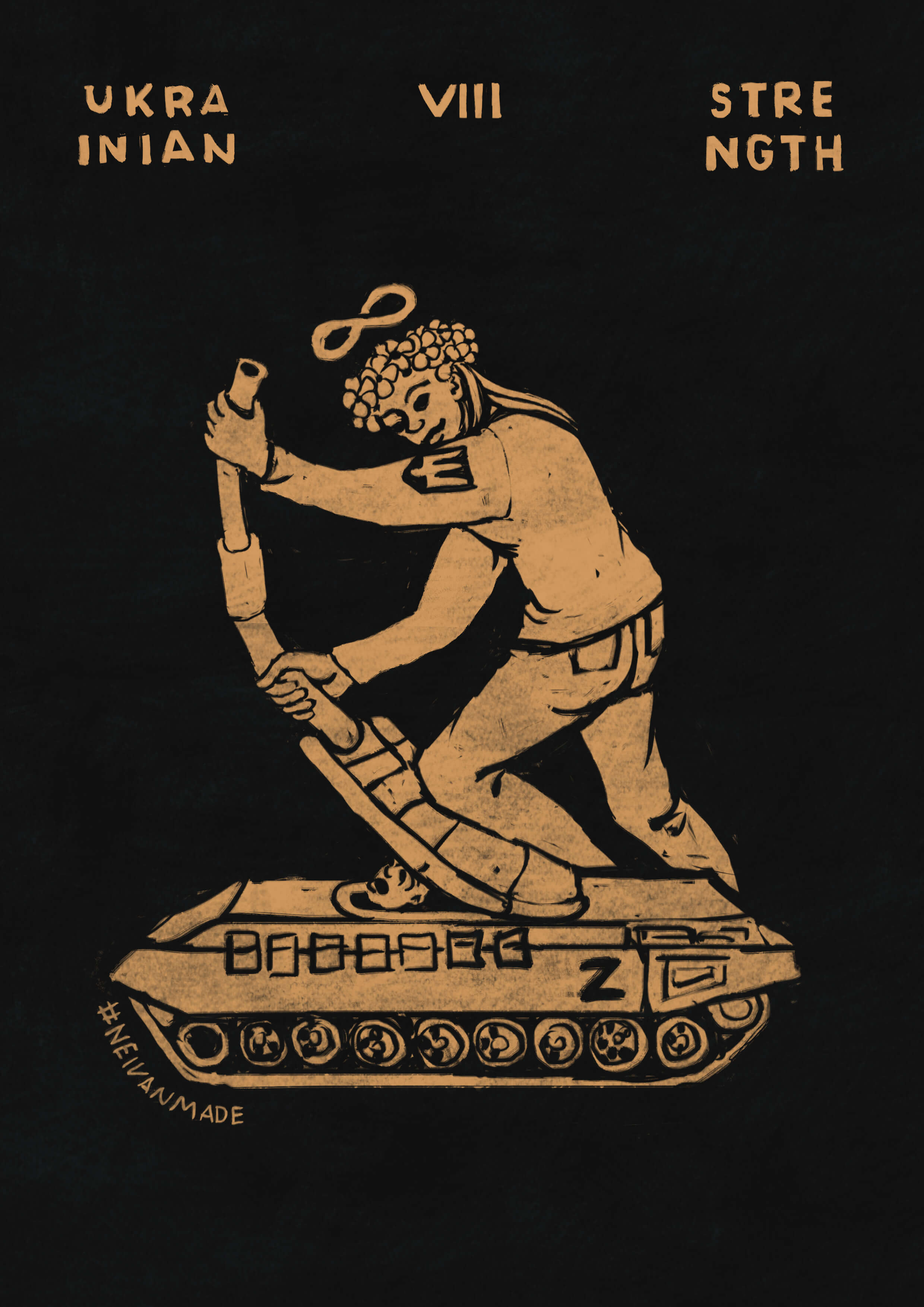
"Strength"
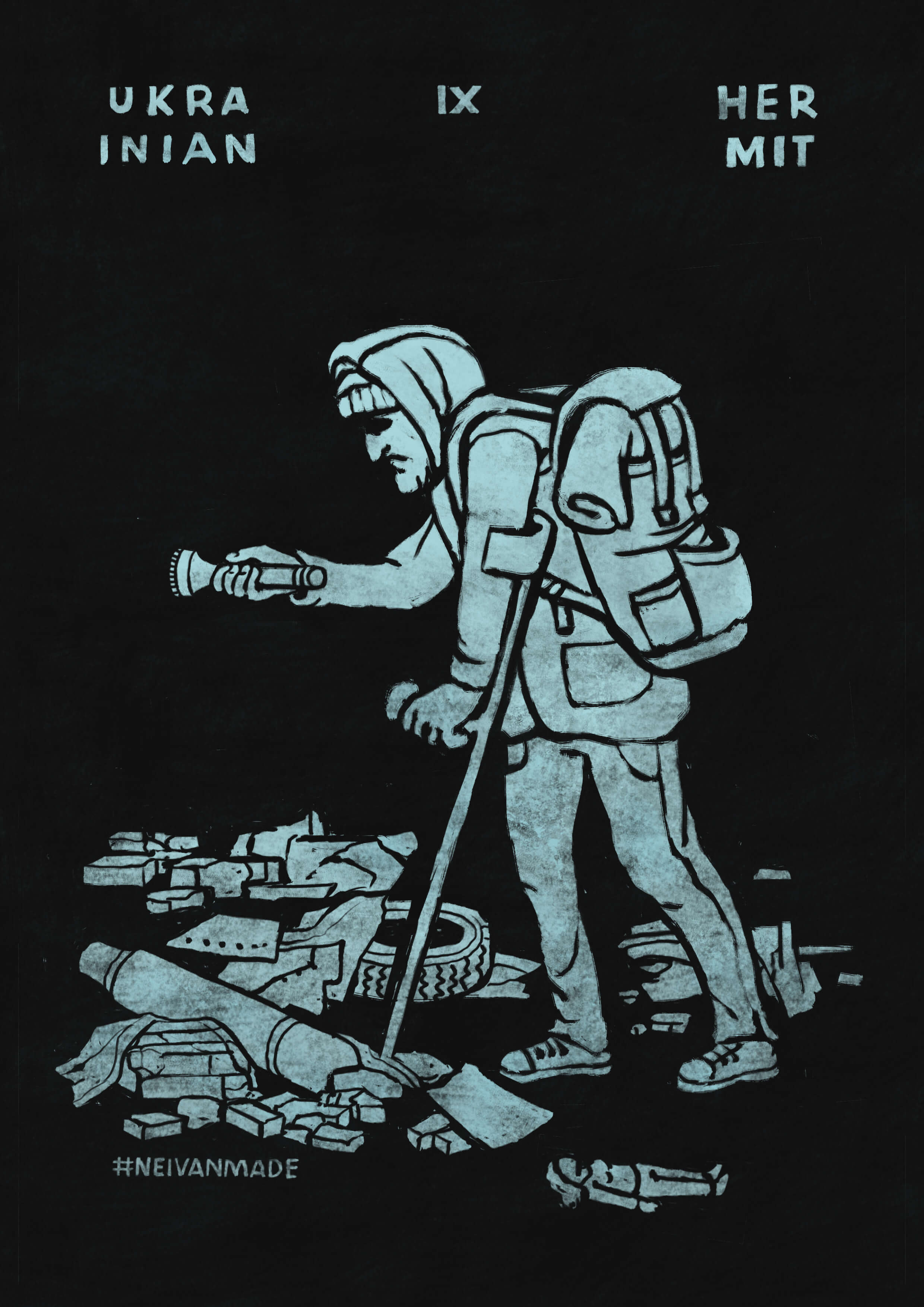
"The Hermit"
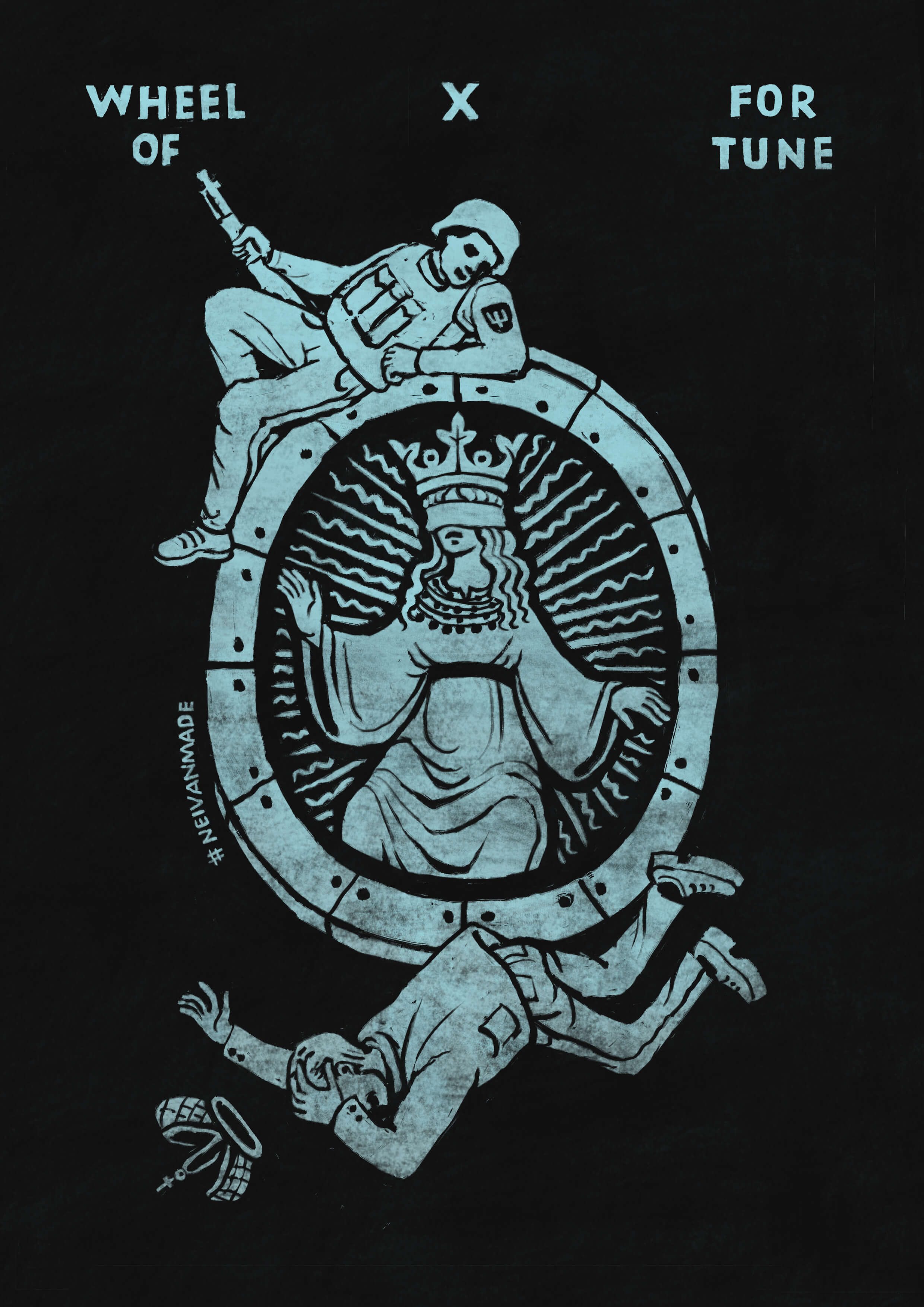
"Wheel of Fortune"
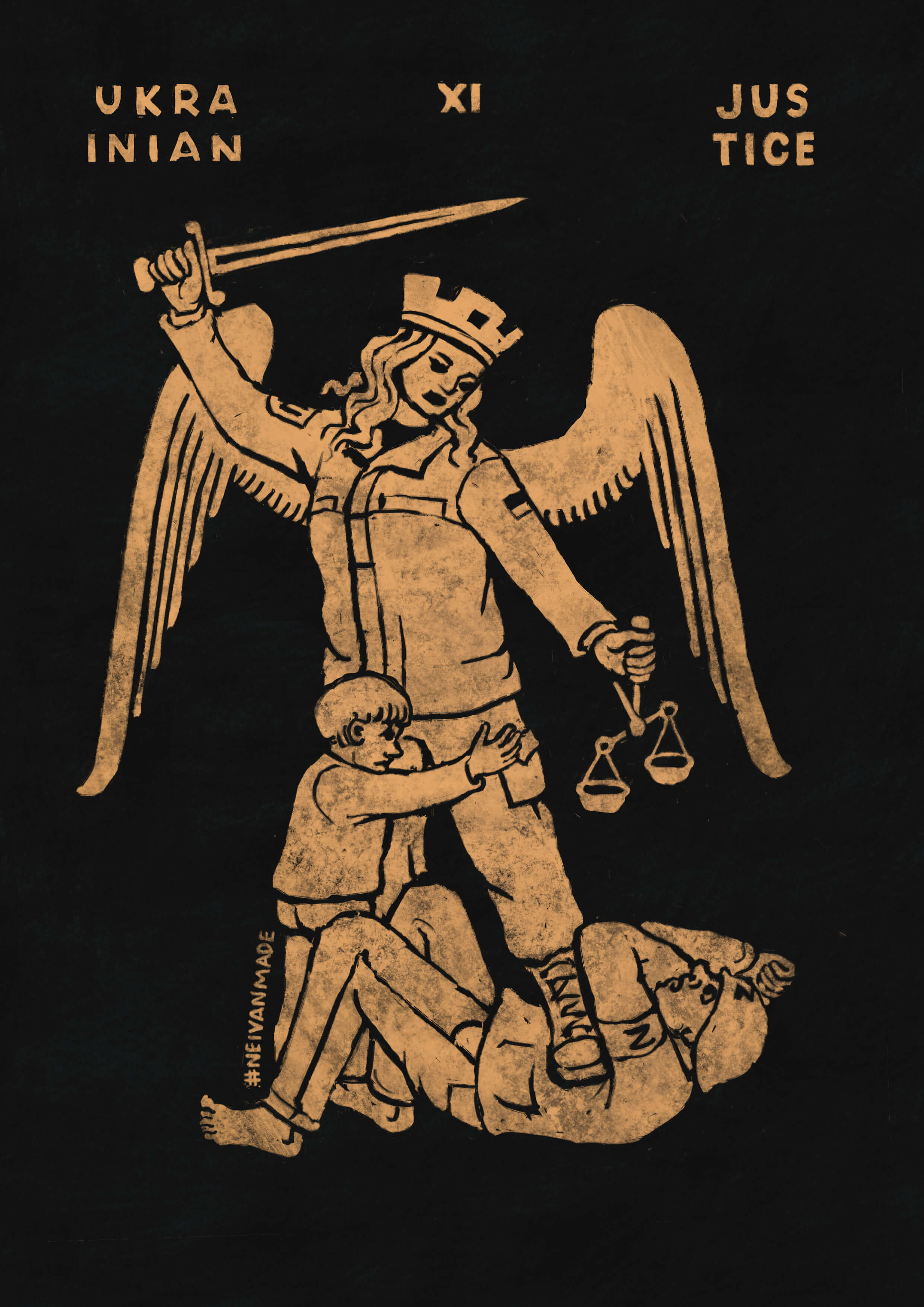
"Justice"
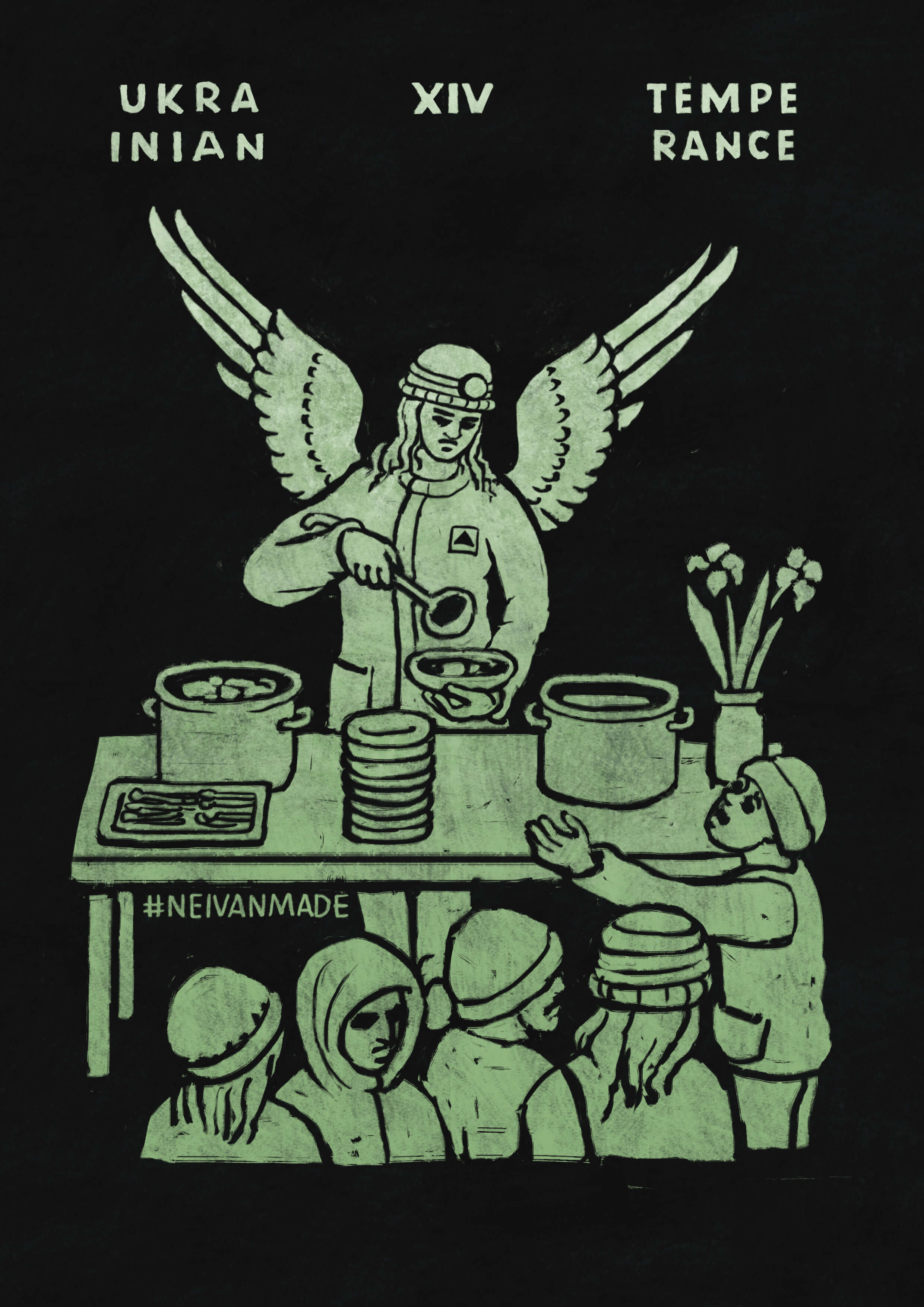
"Temperance"
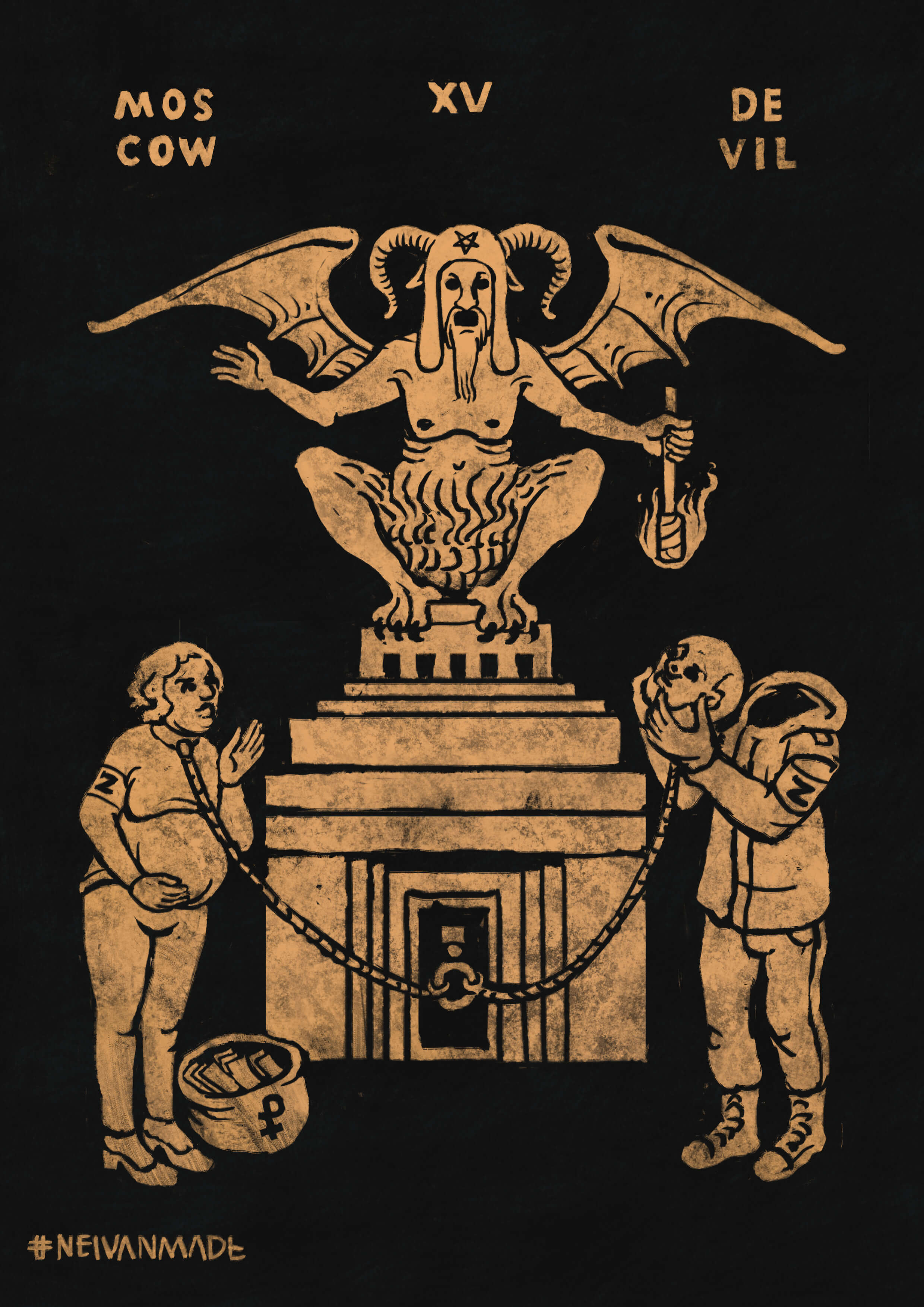
"The Devil"
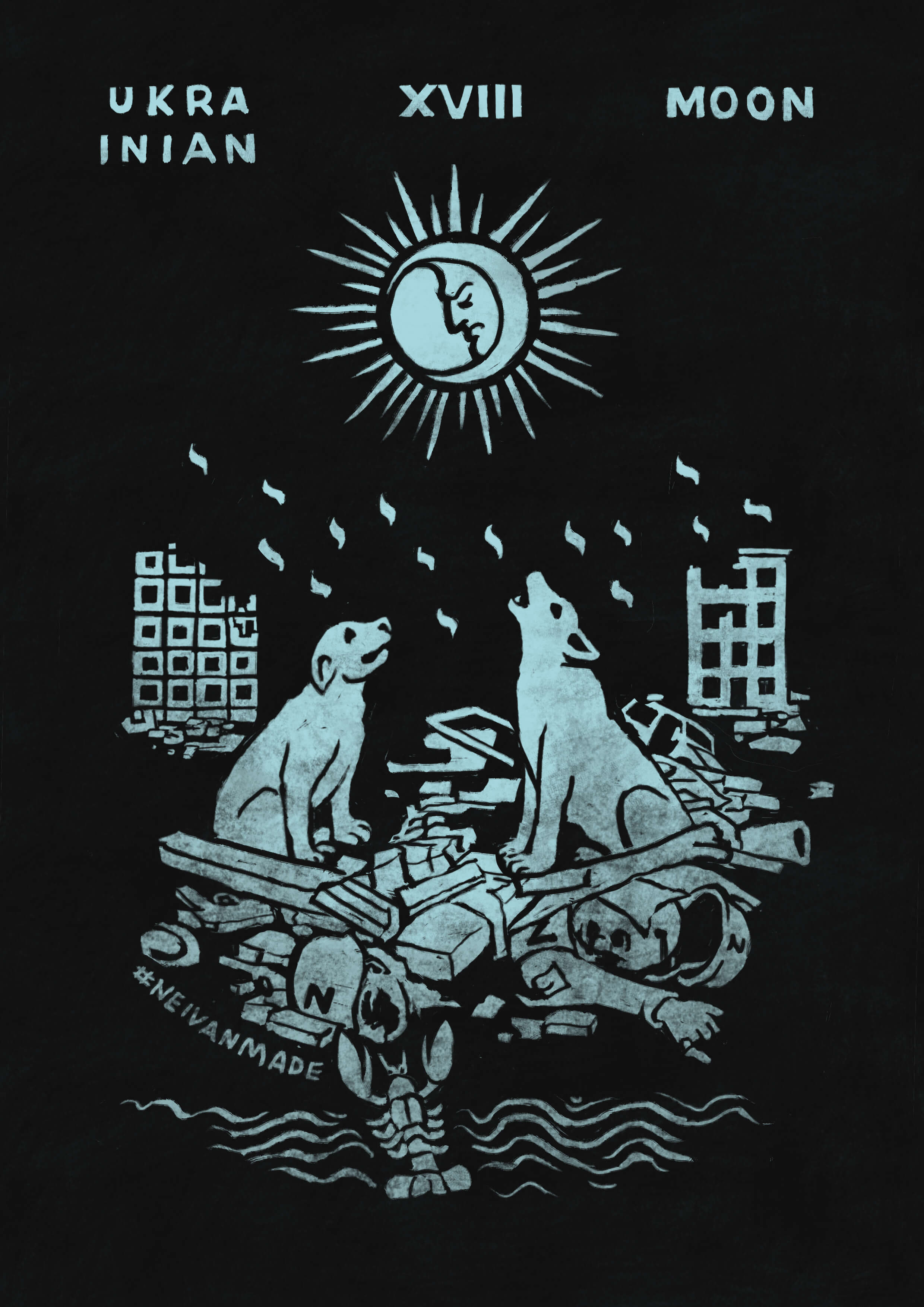
"The Moon"
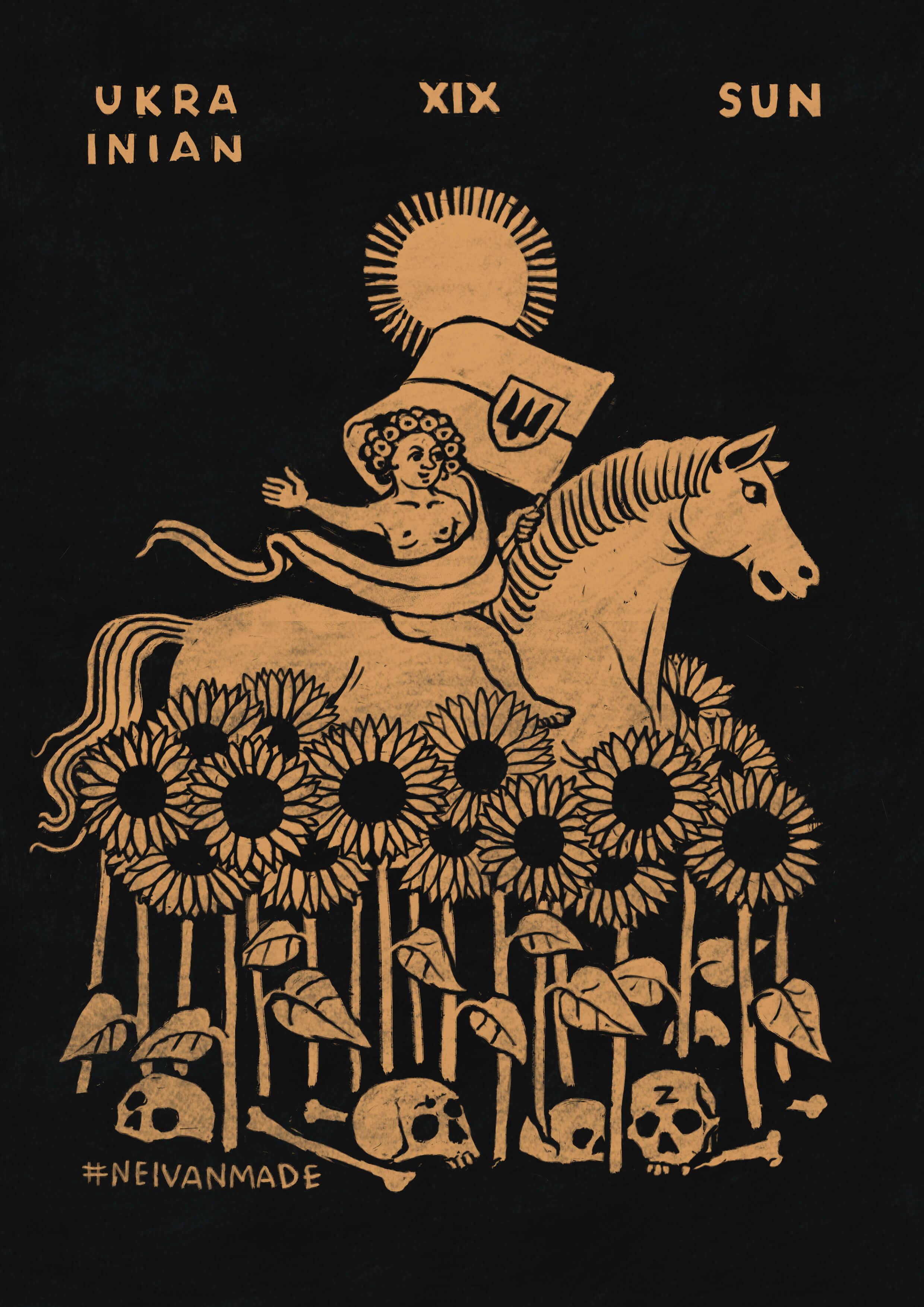
"The Sun"
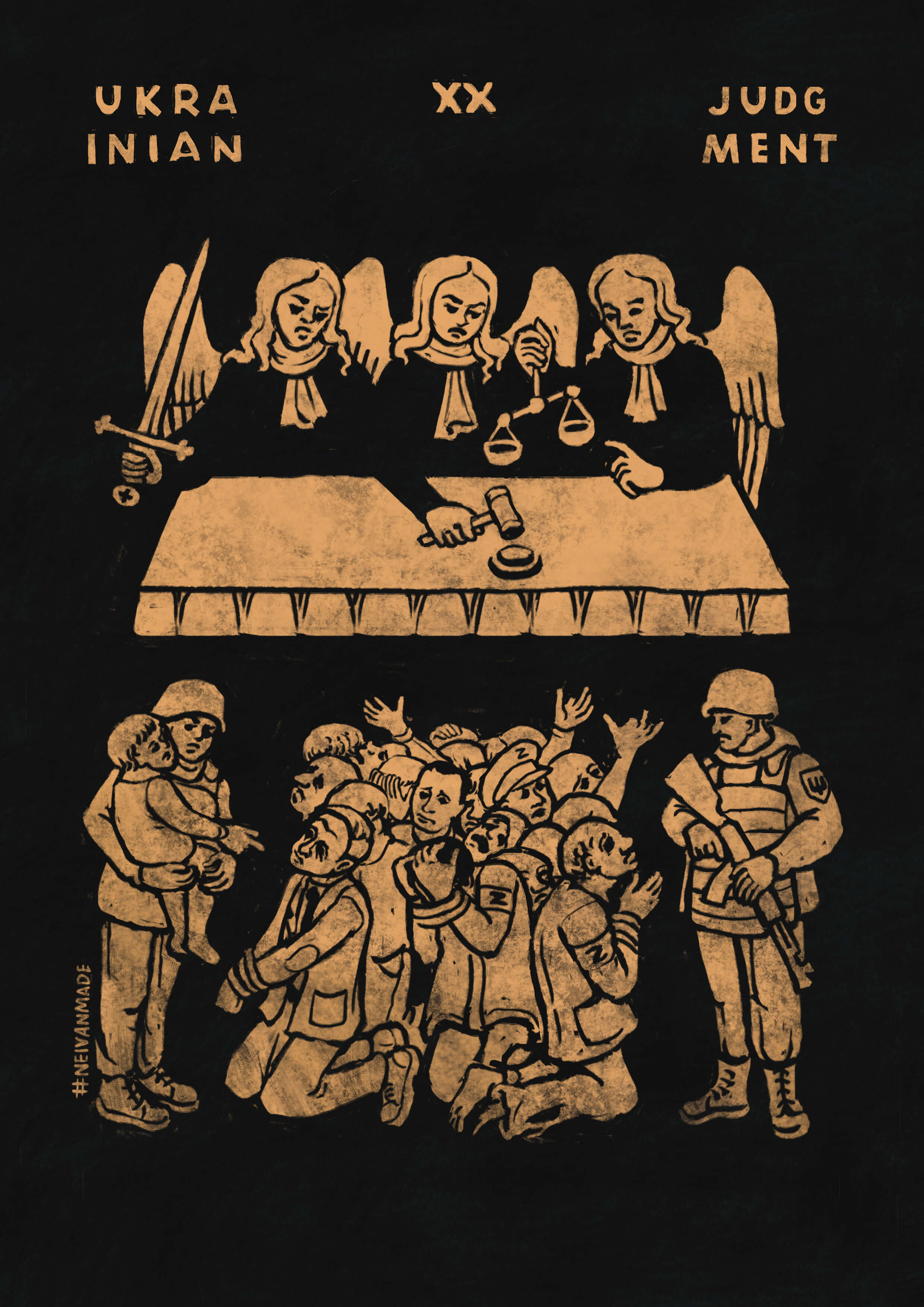
"Judgement"
